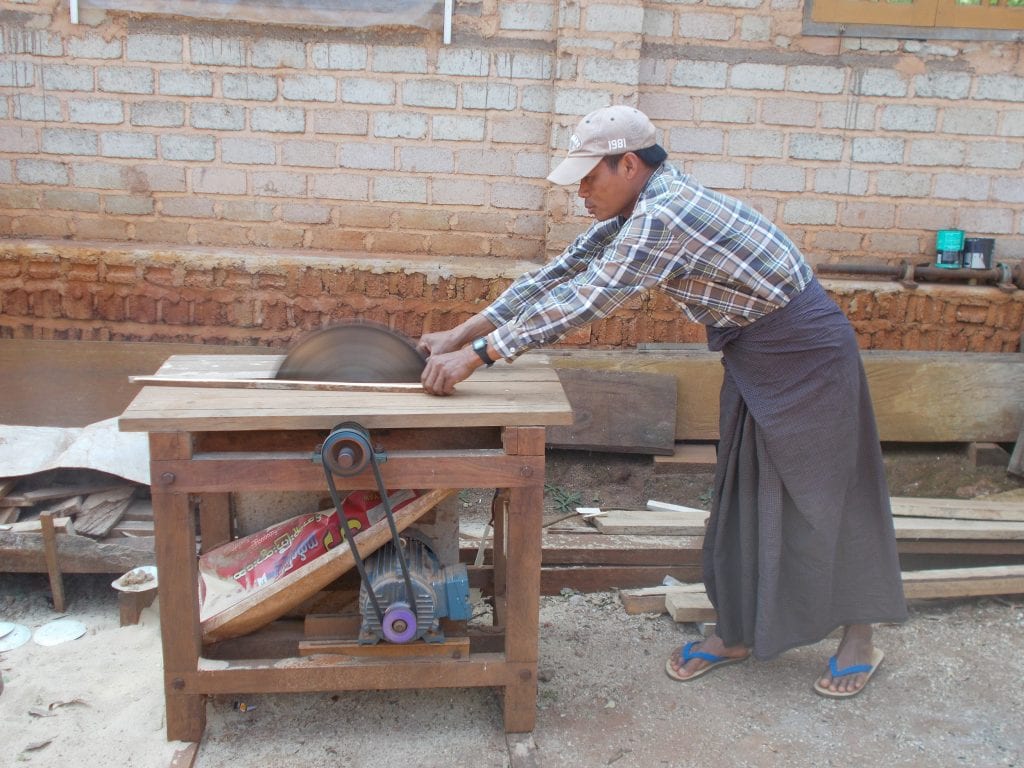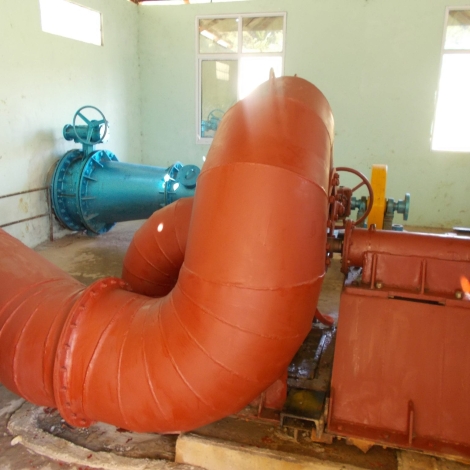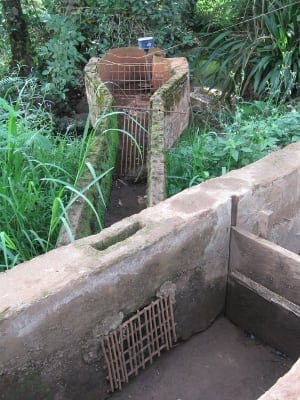U Sai Htun Hla is an engineer and businessman. He breaks into a grin and sweeps his hand expansively as he welcomes us into his workshop – a large open-sided barn deep in the countryside, near the town of Pyin Oo Lwin in central Myanmar. Inside, idle machines and tools stand, waiting for his team to roar them into life to manufacture micro-hydropower turbines.
No international donors. No NGOs. No government support. They just got out there and did it.
In 1987, he established a company that has manufactured and installed over 150 projects below 1 Megawatt (MW). Many of those have been financed by the communities through a cooperative model that he has developed over the decades.
There are at least six developer-manufacturer entrepreneurs of micro-hydropower who have developed over 5000 projects in one state in Myanmar alone. Reportedly, 90 percent of the projects were fully paid by users, with the initial capital costs fronted by the entrepreneurs. No international donors. No NGOs. No government support. They just got out there and did it.

Tools powered by micro-hydro are improving rural incomes. Photo: Sean Furey
Coming from the rural water supply sector, this astonished me. I asked Dipti Vaghela, manager of the Hydro Empowerment Network (HPNet), if it was usual. No, she replied, this is special to Myanmar. HPNet is a regional practitioner network for micro-hydropower with members across South and Southeast Asia, and Ms. Vaghela has seen how the region pays for its infrastructure. Even in countries with widespread micro-hydropower, like Nepal and Sri Lanka, grants from donors and public financing have played an important role.
I had been invited to Myanmar to facilitate their board meeting during which we crafted the outline of a five-year strategy and two-year work plan for the network. As the director of a global practitioner network, I brought practical experience with doing the things that they wanted to do, but I realized that I was also learning an incredible amount on that trip.
These aren’t bush mechanics – many are using 3D CAD software to refine their turbine designs and model their systems.
To spend time with engineers, entrepreneurs and financiers working on rural electrification was an eye-opener. These schemes supply electricity 24 hours a day throughout the year with no expensive energy storage needed, unlike solar. This reliable supply has encouraged what is termed “productive use,” which is using the power to generate income. Brick makers mix cement sand; carpenters use power tools; blacksmiths use auto-hammers, the list goes on. The increased income from these productive uses means that tariffs can be set that cover the costs of the electricity generation and distribution service.
Sounds too good to be true? Well, there are definitely challenges, not just in Myanmar but with micro-hydropower and rural electrification more generally. Some include governance, tariffs and fee collection, high upfront assessment costs, willingness to pay, life-cycle costs, community engagement, supply chains, skills, access to financing and many other aspects that sounded increasingly familiar as the discussions went on.
My own feeling is that a small business taking a loan should go for domestic financing because the vagaries of currency exchange rates are just too risky, even if the terms appear more favorable.
At two meetings with the international network board members and the national entrepreneurs, one thing that stood out is the diversity of financing interests. Those included iNGOs, like Hivos and Nexus for Development, looking to support market-based approaches; donor agencies, like UNDP, Germany’s GIZ, France’s AFD and New Zealand looking to bring in technical experts to find the opportunities and make projects ‘bankable;’ and commercial and impact investors looking for those bankable opportunities in rural renewables.
Because, while the entrepreneurs had achieved a lot on their own, they made it clear that for the next level of scaling up they needed partners. However, for these support agencies the question was where and how could they invest in a way that makes sense to all parties in a deal. That question was not going to be addressed in one meeting, but hopefully it paved the way for productive bilateral meetings afterwards. My own feeling is that a small business taking a loan should go for domestic financing because the vagaries of currency exchange rates are just too risky, even if the terms and interest rates appear more favorable.
Let’s look over the fence now and again to see what is happening more broadly in rural development. Because, guess what? The folks over in SDG7 are tackling similar issues to us and have insights we can use.
Even in the HPNet Board workshop that I was facilitating, the number-one issue that was discussed again and again was the central role of financing of rural electrification services (whether solar or micro-hydropowered), and specifically where in the value chain investment is needed to unleash the creative potential of the entrepreneurs like U Sai Htun Hla.
Some of my take-ways were these:
- Rural water supply is generally comfortable in the WASH bubble of SDG6.1 (and 6.2), but let’s look over the fence now and again to see what is happening more broadly in rural development. Because, guess what? The folks over in SDG7 are tackling very similar issues to us and have insights that we can use.
- In a globalized world, there is still value for localization. The money that the customers of U Sai Htun Hla are paying for their electricity is largely staying in the local economy and creating local, skilled employment. These aren’t bush mechanics – many are using 3D CAD software to refine their turbine designs and model their systems.
- So, let’s look more seriously at multi-utilities — combined rural water and electricity supply that are trying to reach the same households and communities. And let’s have those conversations with national investors to nurture bankable opportunities.
- Micro-hydropower has an uphill battle against other sources because its applicability is strongly context specific. But, a big advantage of micro-hydropower is that it can deliver multiple benefits in terms of longevity, clean energy and river catchment management – and potentially water supply too.
I thank HPNET, its Board, and its local partner in Myanmar, the association Hydropower for Community Empowerment in Myanmar(HyCEM) members in Myanmar for their great hospitality and insights.
The Skat Foundation’s Skat Consulting Ltd. Project Fund financed this network support mission to Myanmar. For over 40 years, Skat has been a leading organization in the fields of rural water supply and micro-hydropower. For more visit: www.skat.ch.
About the Author
Sean Furey is a Contributing Editor at Engineering for Change and Director of the Rural Water Supply Network (RWSN) Secretariat at the Skat Foundation in St. Gallen, Switzerland.

